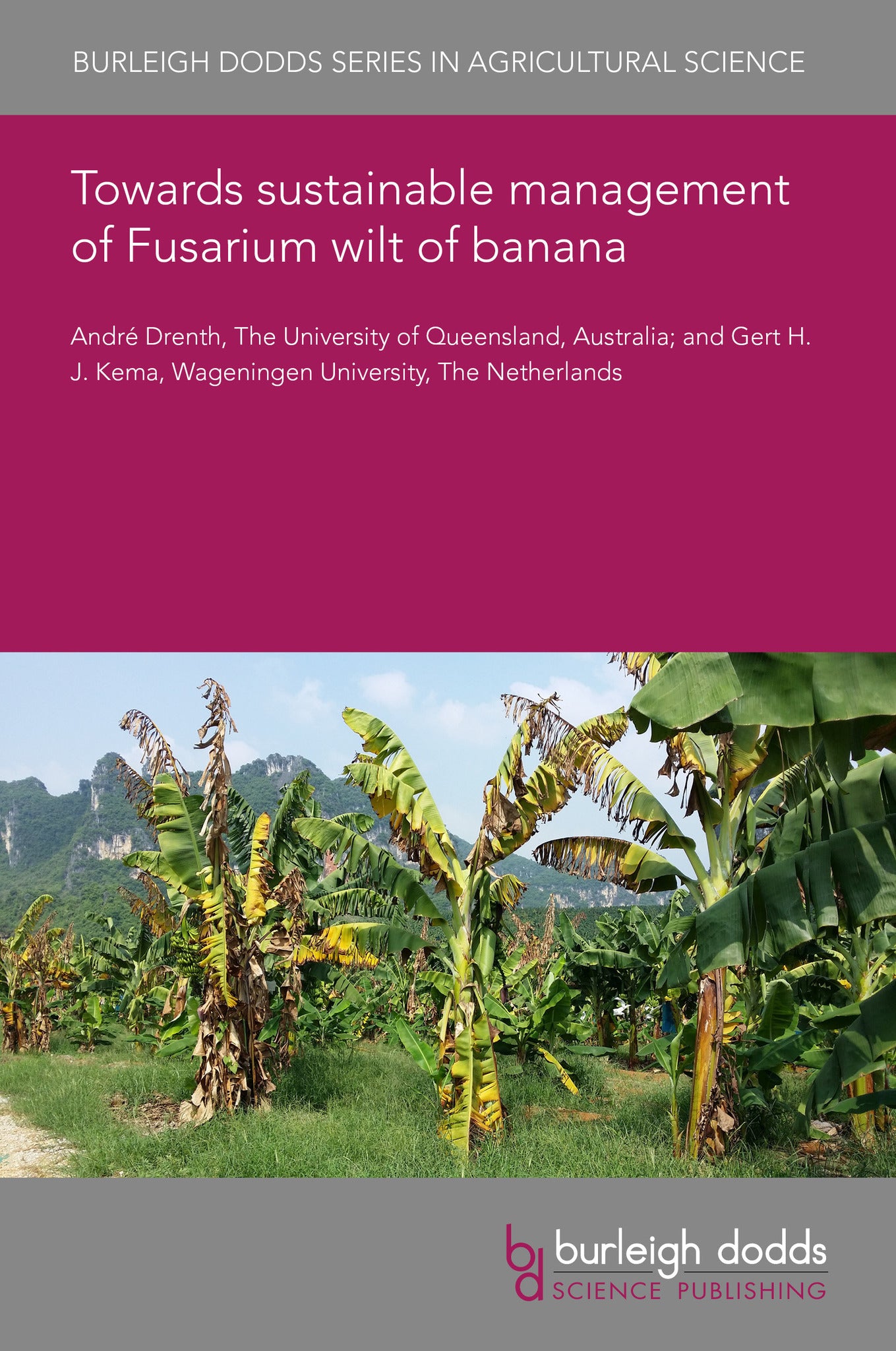We're sorry. An error has occurred
Please cancel or retry.
Towards sustainable management of Fusarium wilt of banana

Some error occured while loading the Quick View. Please close the Quick View and try reloading the page.
Couldn't load pickup availability
- Format:
-
11 March 2024

Since the start of growing bananas in large plantations the industry has been plagued by the introduction of numerous pathogens and none more troublesome than Fusarium wilt of banana (FWB). The introduction of Fusarium race 1 in the Gros Michel plantations in Latin America led to one of the major plant disease epidemics of the 20st century. This chapter outlines the development of the disease, the mode of infection and epidemiology. An account is given of the various disease control methods trialled over the last century and the underlying biological factors are outlined to explain why most of these management options have been ineffective in a monoculture plantation setting to control FWB. At the same time, some of the successful options to manage this disease are explored, together with the challenges around implementing long-term effective disease control measures to combat this disease.

TECHNOLOGY & ENGINEERING / Pest Control, Pest control / plant diseases, SCIENCE / Life Sciences / Horticulture, TECHNOLOGY & ENGINEERING / Agriculture / Agronomy / Crop Science, TECHNOLOGY & ENGINEERING / Agriculture / Sustainable Agriculture, TECHNOLOGY & ENGINEERING / Agriculture / Tropical Agriculture, Commercial horticulture, Tropical agriculture, Sustainable agriculture, Agricultural science

- 1 Introduction
- 2 The Fusarium race 1 epidemic in Gros Michel
- 3 Infection and development of disease symptoms
- 4 Efforts to manage Fusarium wilt of banana
- 5 Why is Fusarium wilt of bananas so difficult to control?
- 6 The solution that created a future problem
- 7 The rise of Fusarium wilt in bananas caused by tropical race 4
- 8 The strong arm of resistance
- 9 Conclusion
- 10 Where to look for further information
- 11 References



